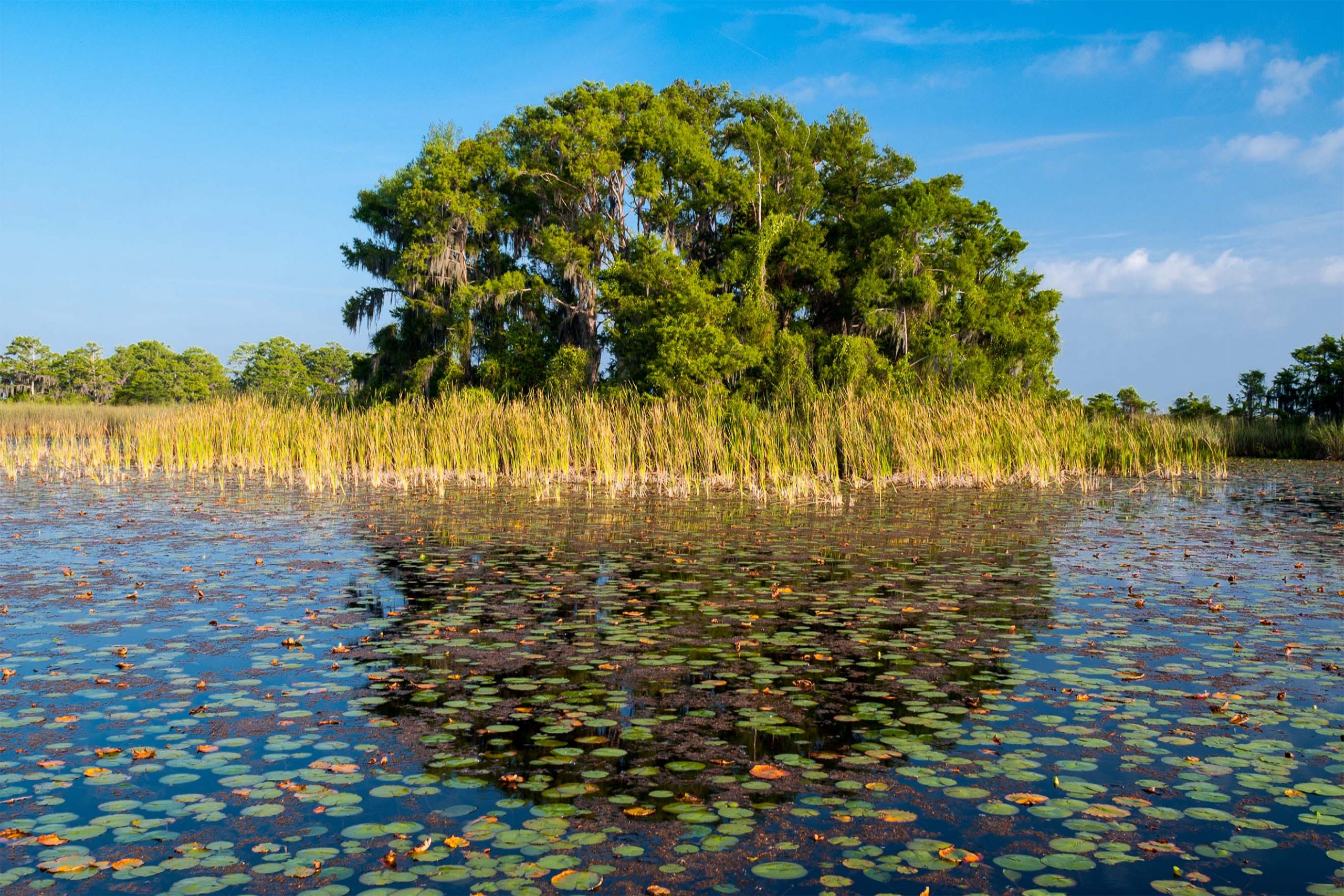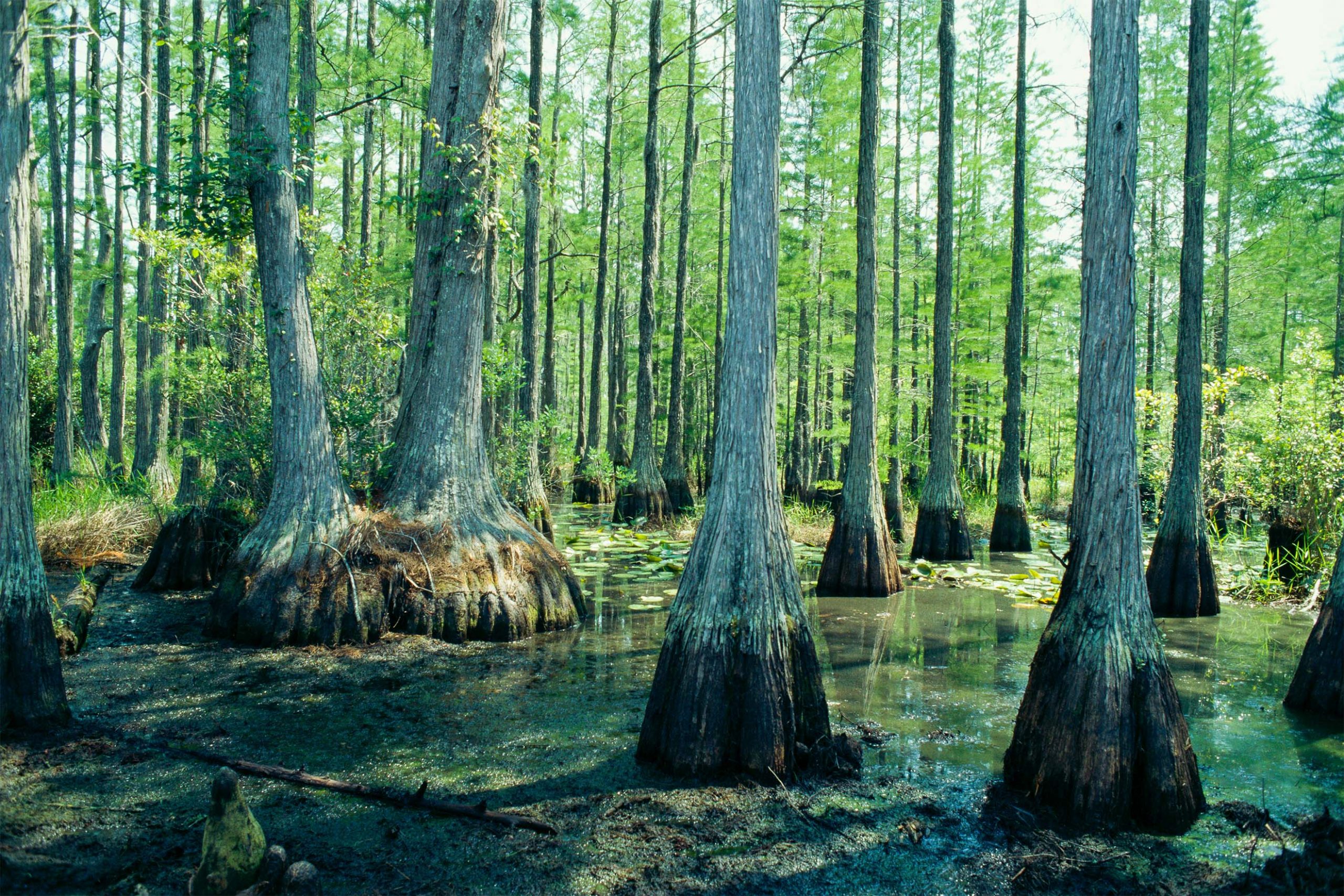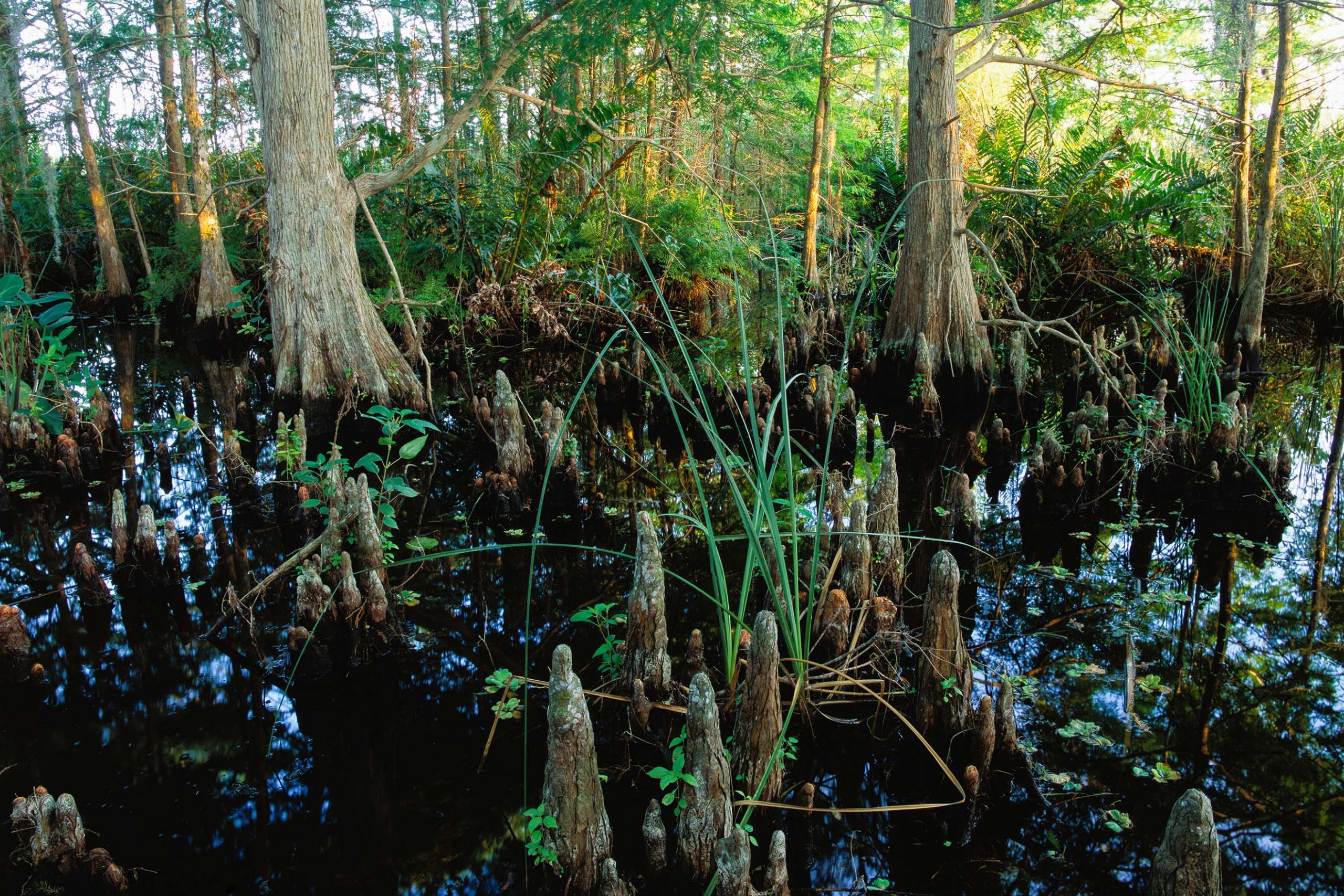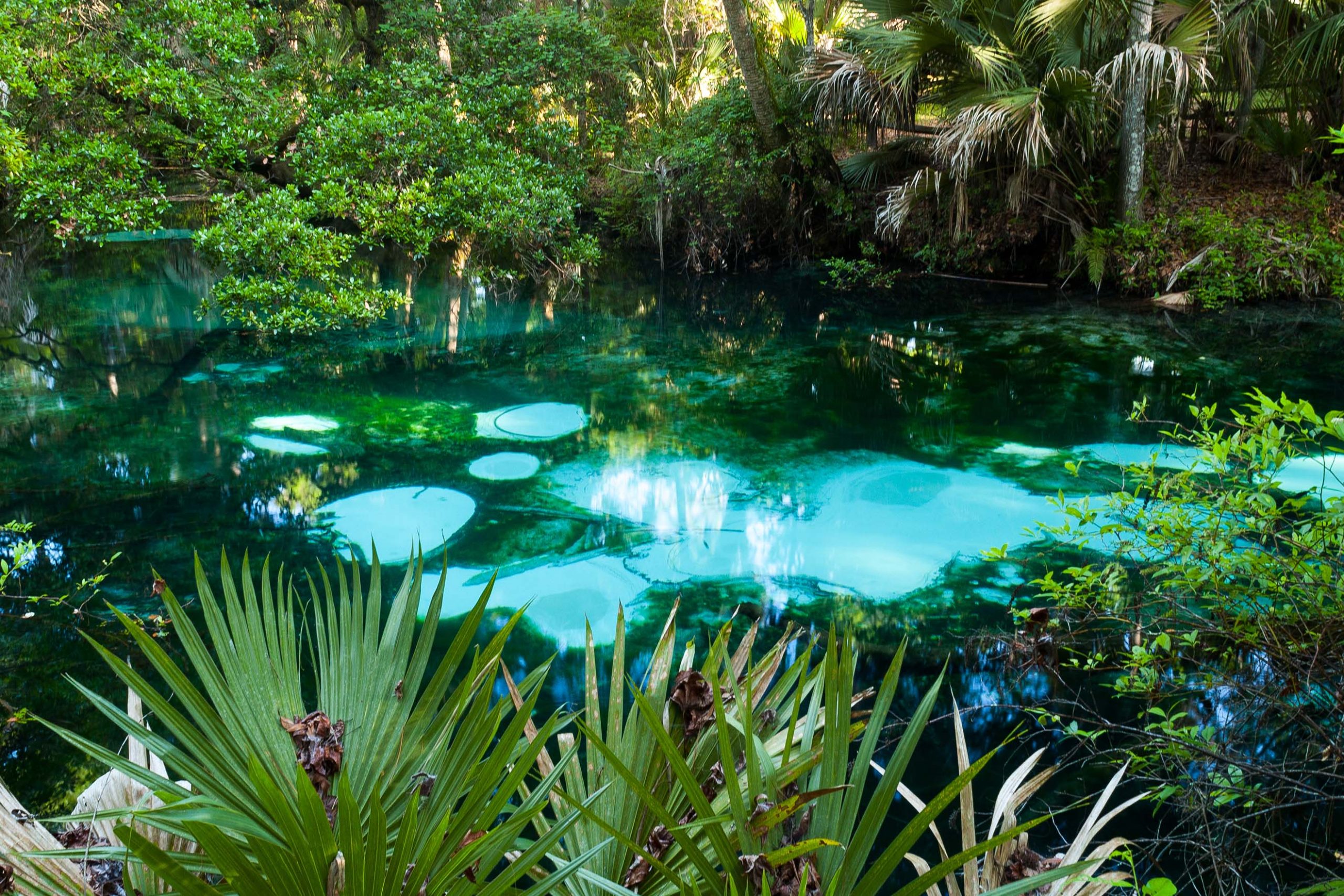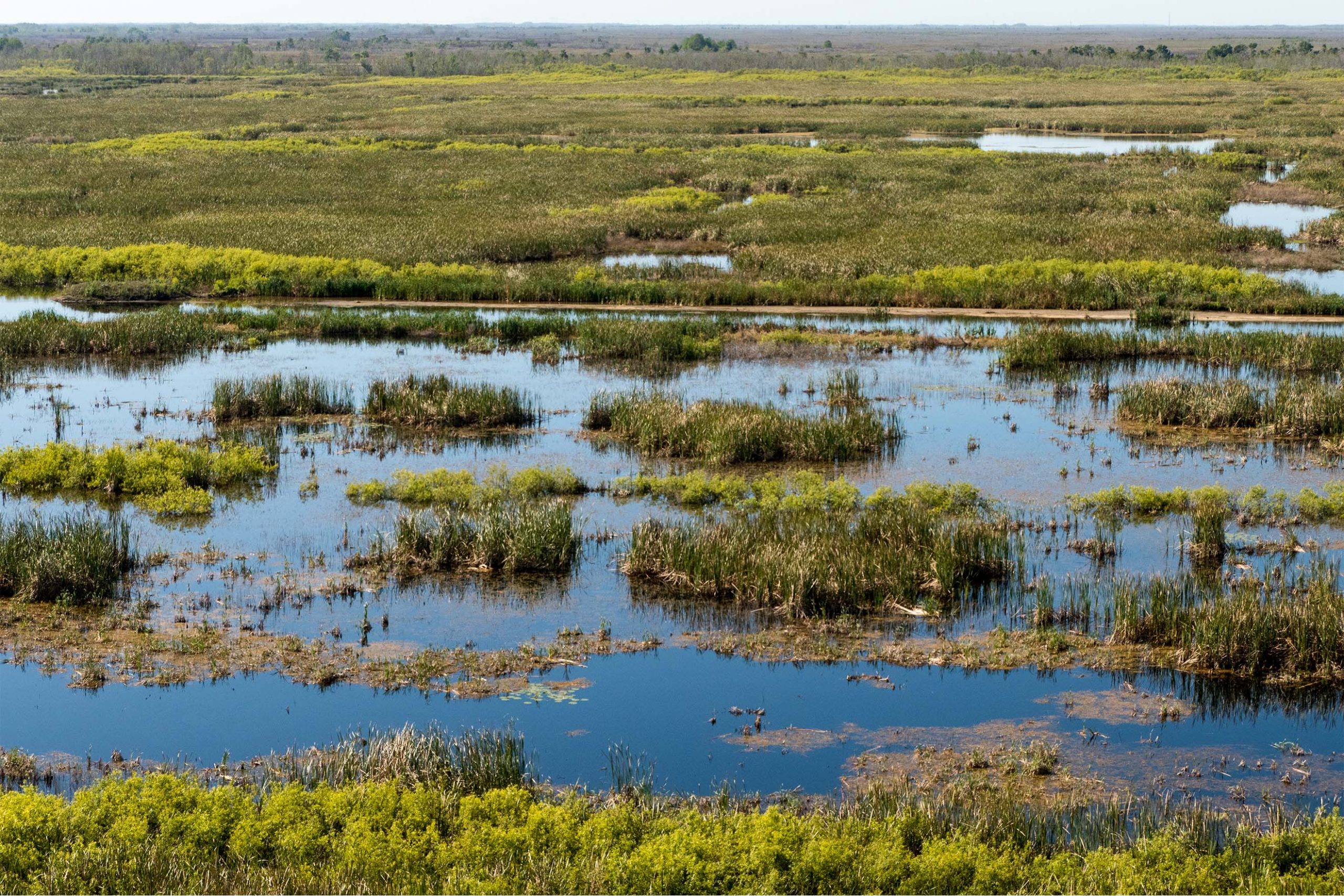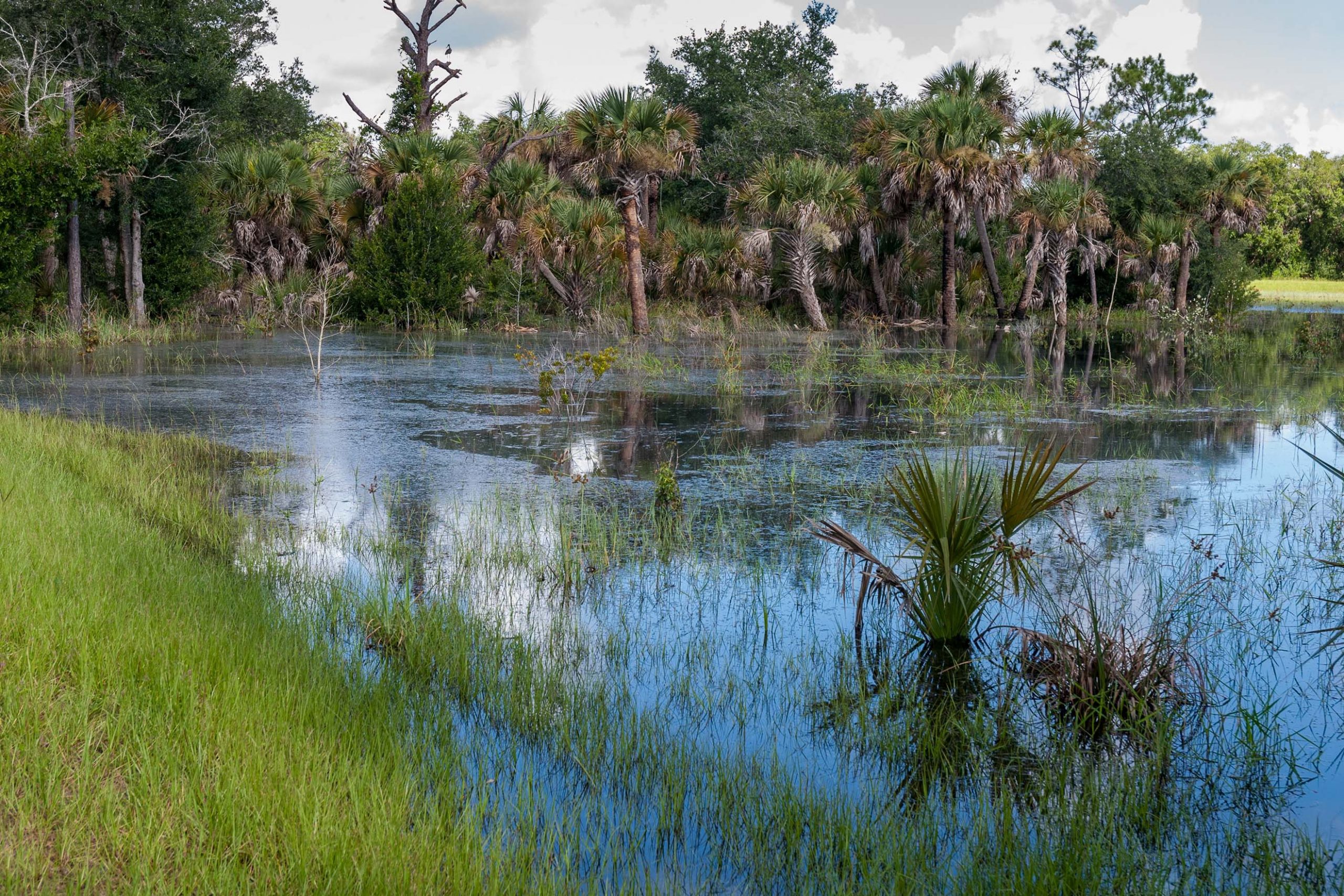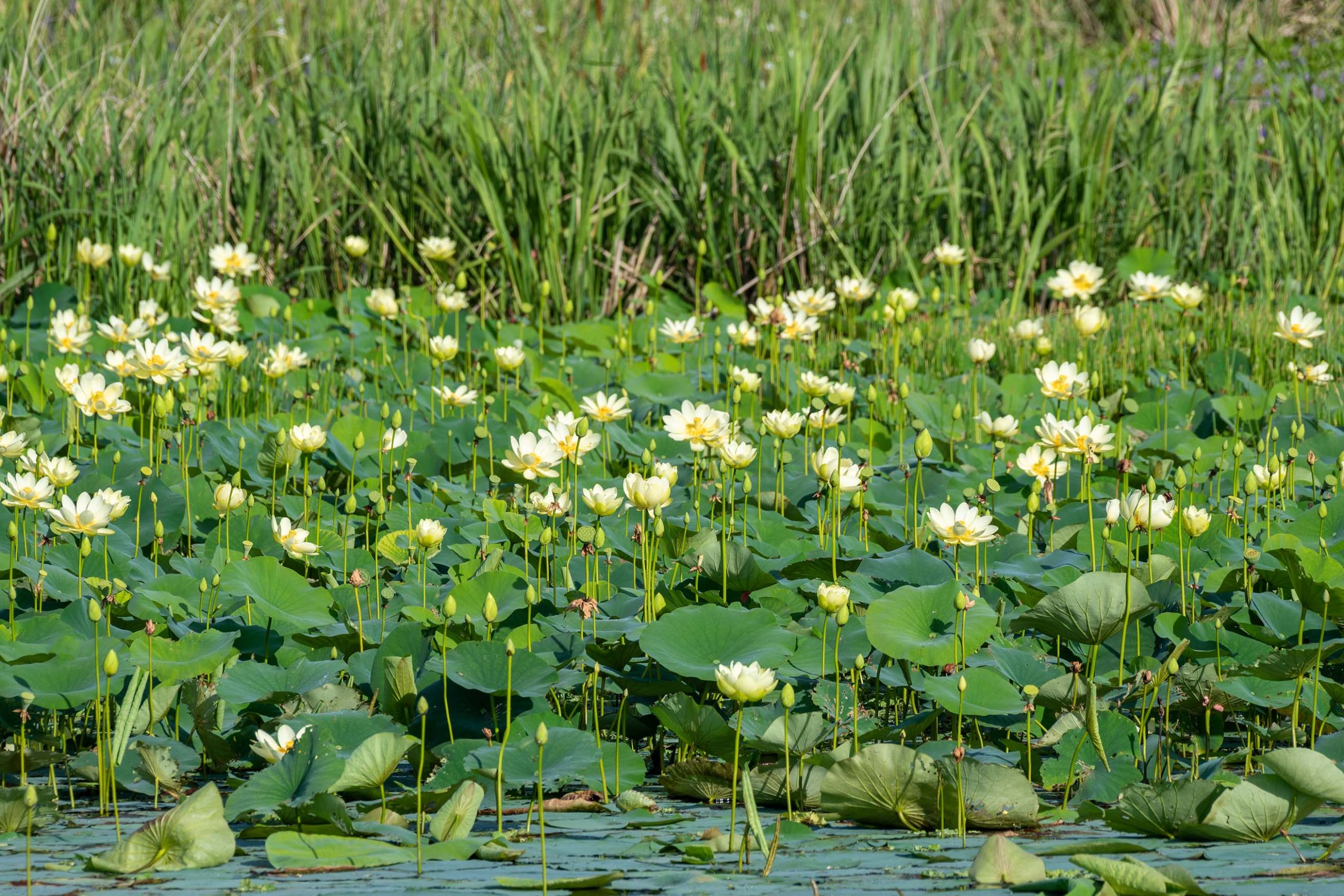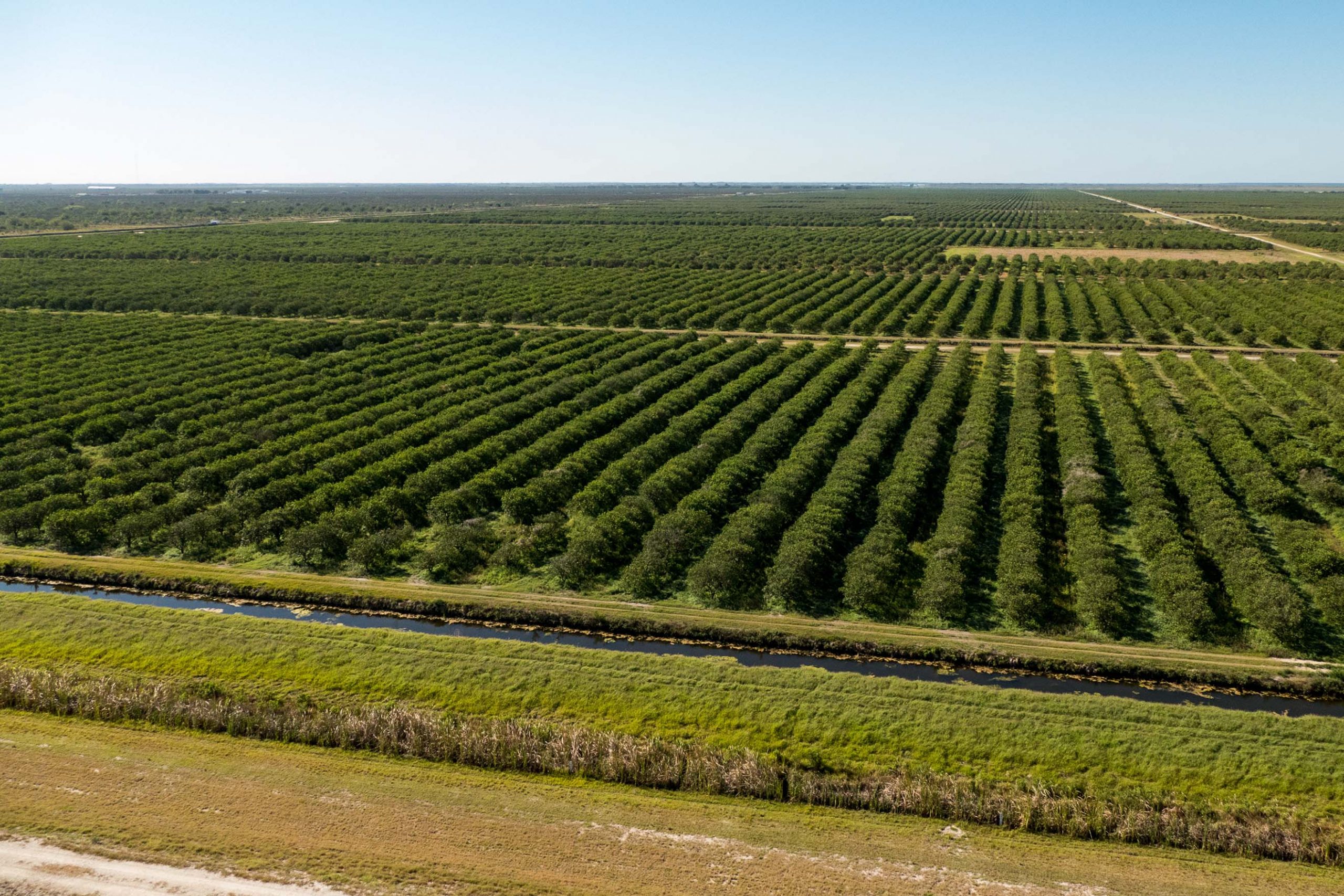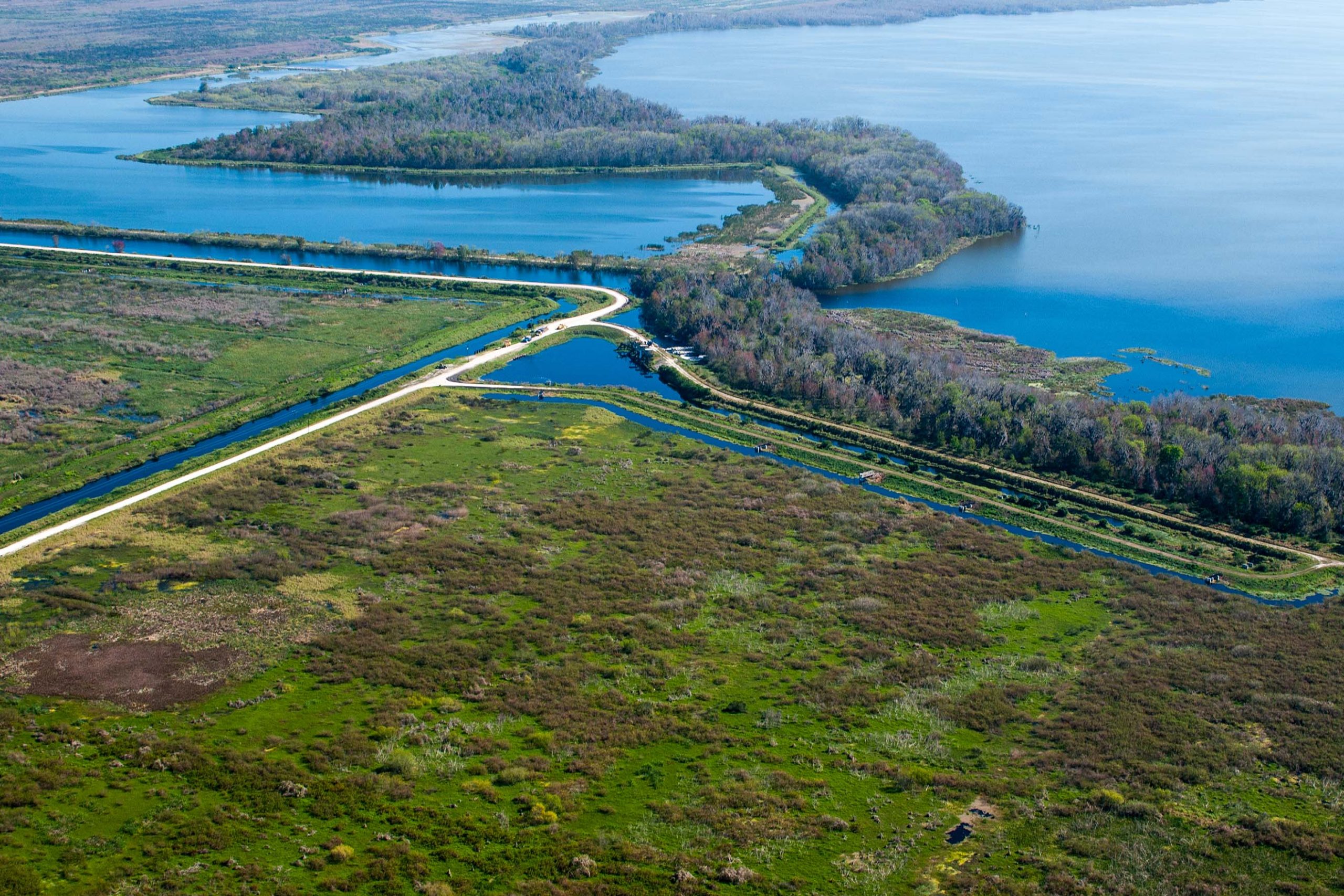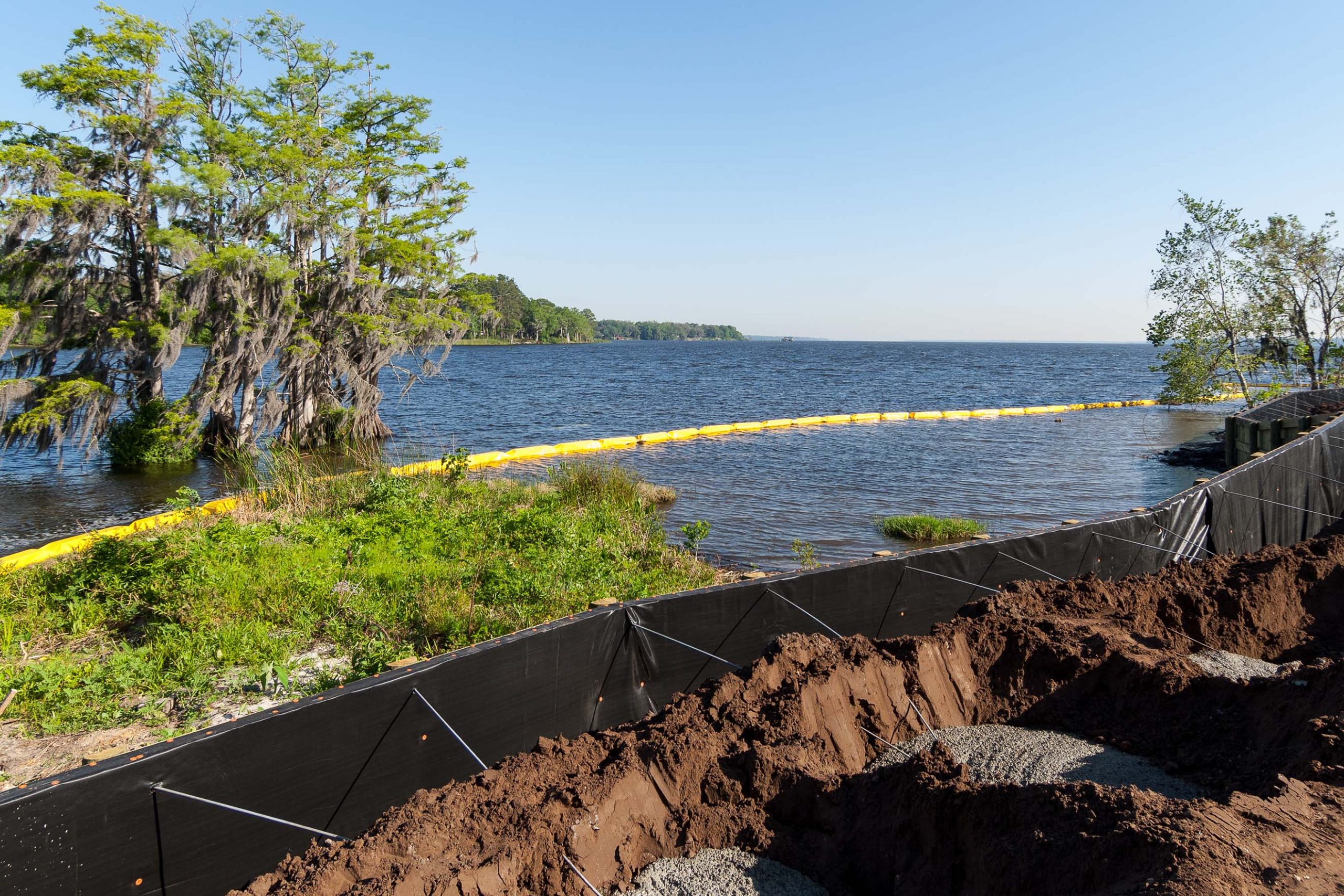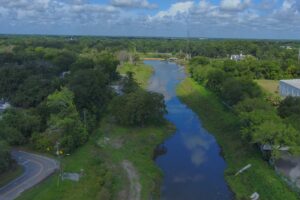Take our District lands quiz!
Ah, wetlands, long disregarded as the Rodney Dangerfield of ecosystems. We all know the joke about the scammer who sells an unsuspecting out-of-stater swampland in Florida. In truth, Florida’s wetlands provide many beneficial services to people and for fish and wildlife. We’d explain in more detail, but we don’t want to spoil the quiz. If you don’t fancy quizzes, at least check out the accompanying photos.
Need a little help first? Learn more about our work to protect wetlands at www.sjrwmd.com/education/wetlands.
6.
Mitigation is an activity that a permit recipient undertakes to offset impacts to wetlands or surface water functions caused by altering these areas. Mitigation options may include:
a. Restoring or enhancing wetlands
b. Creating or preserving wetlands, surface waters or uplands
c. Buying credits from a mitigation bank
d. Contributing funds to purchase lands currently being acquired by the District
e. All of the above
- All of the above. Wetlands are known by many names including lagoon, tidal marsh, swamp, cypress dome, marsh, grass pond, hammock, bottomland, wet prairie and bayhead.
- C — Parched earth is not an indicator of a wetland, which is an area that supports plants adapted to wet soil and often to changes in water level. Indicators include dark, mucky soils and some sandy soils; standing water after rain; exposed roots on trees; swollen tree bases; water lines and “lichen” lines; presence of some ferns; cypress, water oak, pond pine, ash or elm trees; and floodplains.
- E
- A — An aquifer is a layer of underground rock or sand that stores water.
- A — Florida contains approximately 20 percent of the remaining wetlands in the U.S.
- E — All of the above
- False — Vegetation, soils and hydrology (the study of water’s properties, movement and distribution) are the major factors in determining if an area is a wetland.
- True
- False — Wetlands are estimated to currently make up about six percent of the Earth.
- True


